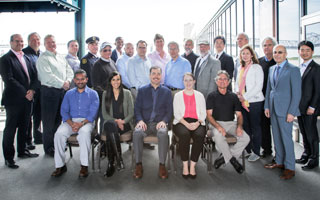
Sandia is building on longstanding partnerships to help found a new global center focused on safety and best practices for the use of hydrogen in the global energy transition.
The American Institute of Chemical Engineers, in partnership with Pacific Northwest National Laboratory, recently launched the Center for Hydrogen Safety.
As a founding member, Sandia will build additional partnerships with members from many countries to identify innovative tools, resources and information about traditional hydrogen applications and hydrogen as a fuel source.
The new center stems from a decade-long partnership between the DOE’s Fuel Cell Technology Office and the safety panel. The CHS will enable global collaboration, leverage expertise from the panel and offer a long-term, sustainable hydrogen safety resource to stakeholders, said Chris LaFleur, Sandia’s program lead for hydrogen safety, codes and standards.
The panel reviews DOE research projects on hydrogen technology development. The new CHS will expand the panel’s role to the review of research, products and facilities from many fields and funding sources, in addition to DOE research and projects.
With the help of founding members such as Sandia, the CHS will provide access to educational products, safety resources, hydrogen safety guidelines, conferences, accredited first responder training and safety evaluations by the panel.
The new center also will boost access to Sandia’s Hydrogen Risk Assessment Model, a software toolkit that uses deterministic and probabilistic models to quantify accident scenarios, predict physical effects and define hydrogen hazard impacts on structures and people, based on hydrogen behavior physics and flame properties.
“We can now share Sandia’s hydrogen safety knowledge with a lot of people,” Chris said.